Custom BALLISTIC Barriers
Bulletproof barrier products personalized for you.
Looking for a niche or specific bulletproof solution? You’re not alone! Plenty of customers approach TSS with unique ballistic protection needs because of our reputation of highly-skilled engineers, craftsmen, and security specialists. In fact, we are the only bullet-resistant manufacturing company with consulting, engineering, project management, fabrication, and installation teams fully in-house. This makes it extraordinarily easy to not only design and engineer the most practical solution for our customers, but to provide a complete end-to-end experience that makes the project process painless.
Our ballistic barrier product capabilities include both retrofit and new construction. Because we custom engineer and fabricate our products in-house, components will be made to meet your specifications and deliver both safety and aesthetics.
TSS’ Custom Design and Fabrication Capabilities for Ballistic Protection
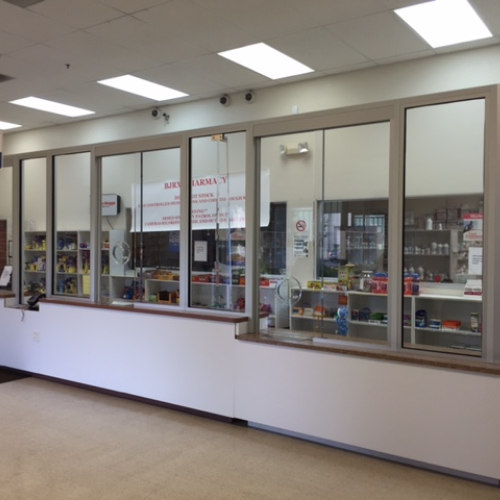
Transaction Lines
Create custom, bulletproof barriers in any kind of transaction-based contexts, such as banks, social services, and more.
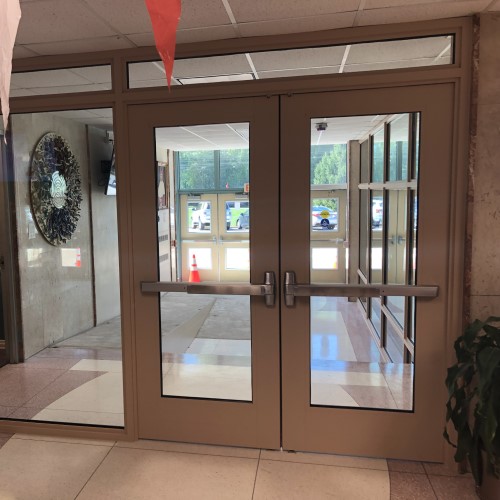
Entryways
Create secure vestibules, “man traps,” and other integrated physical security features to your facility’s entryways.
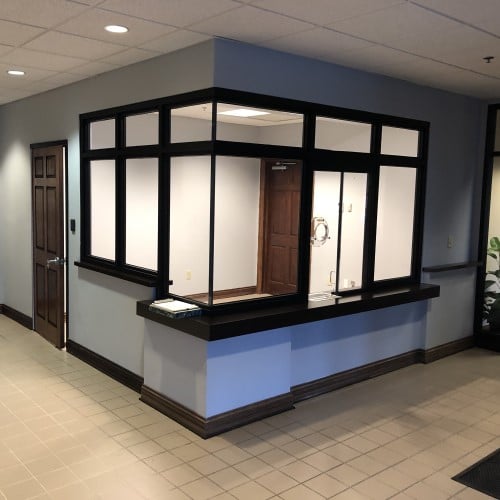
Reception Areas
Implement ballistically secure front desks from scratch or by retrofitting existing architecture. Reception areas often include ballistic countertops and glass barriers.
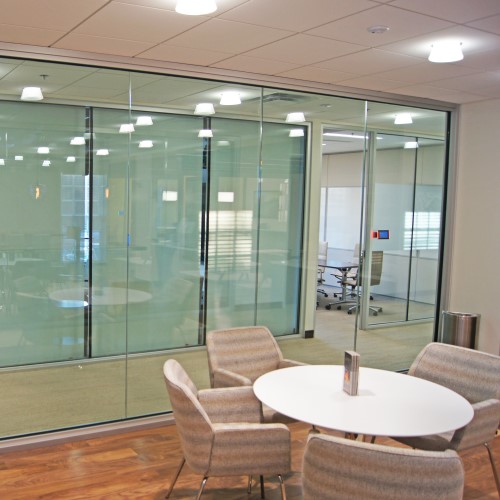
Safe Rooms
Transform an existing room into a ballistically-rated space using bulletproof panels, doors, and glass.
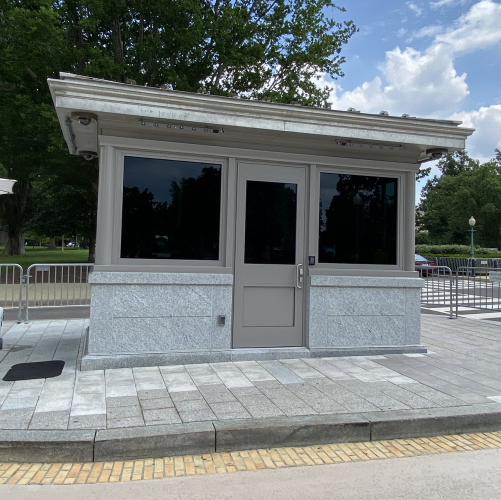
Guard Booths
Design and install ballistically-secure booths indoors or outdoors. Retrofit designs can be installed without damaging existing or historic architectural features.
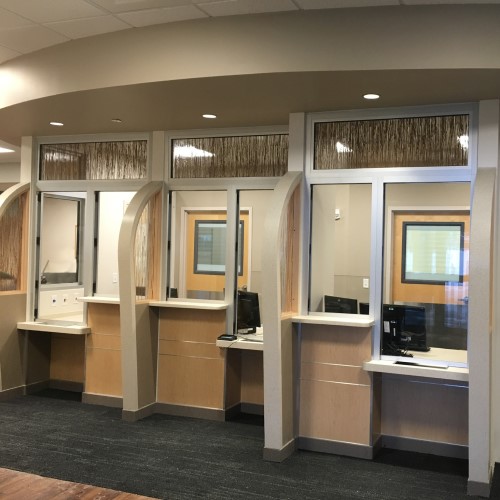
Desks and Workstations
Imperceptibly reinforce all types of desks, including countertops, cubicles, and other workstations.
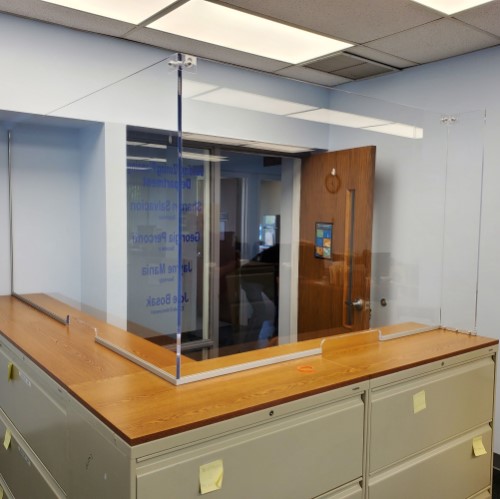
Reach Guards
Prevent aggressive acts, potential threats, and altercations with custom reach guards. Reach guards are available in a variety of protection levels to meet security needs.
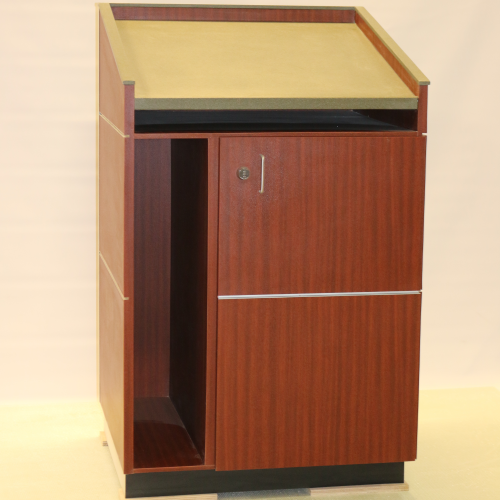
Podiums
Reinforce permanent or freestanding podiums with ballistic fiberglass. Natural finishes and wood veneers make podiums indistinguishable from non-ballistic options.
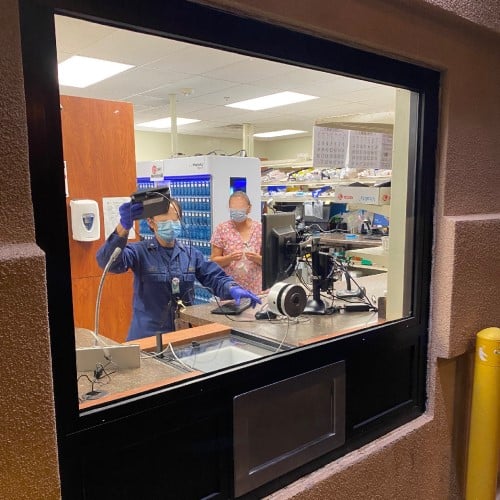
Other Custom Ballistic Barrier Projects
Don’t see an example that you’re looking for? We’d still love to speak with you about your project. Our experienced team is ready to help you find the right solution.
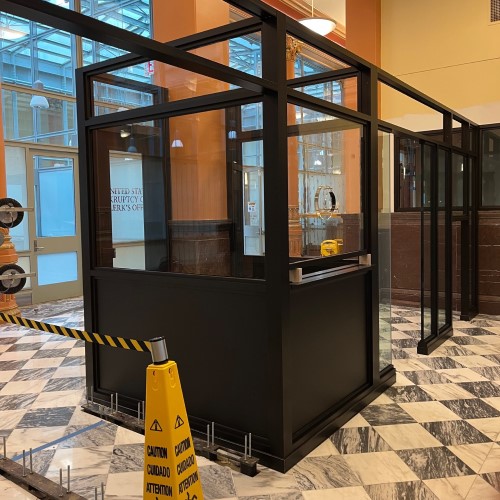
Custom Bullet-Resistant Project Highlight: Guard Booth Design, Fabrication, and Installation in NYC
The Conrad B. Duberstein US Bankruptcy Courthouse is a stunning, Romanesque Revival-style municipal building in the heart of Brooklyn, New York. The court needed to add a secure vestibule to the front entrance, but damaging the historically-significant interior was not an option. TSS designed and engineered a solution that achieved all of their critical infrastructure goals at once: a bulletproof guard booth that provided necessary security, spectacular engineering that accounted for sloped floors and other old-building quirks, and flawless freestanding installation that did not damage or permanently alter existing millwork or surfaces.
Frequently Asked Questions
What makes a ballistic guard shack (or guard buildings) different from a standard security booth?
A ballistic guard shack (sometimes referred to as a guard house or guard building) is built to withstand real-world threats—like bullets, forced entry, explosives, and even vehicle ramming—while protecting the people inside. Unlike standard prefabricated booths, TSS ballistic guard shacks are engineered to UL 752 standards, often using materials like glass-clad polycarbonate and bullet-resistant fiberglass. These structures are custom-built to your site conditions and integrated with your access control and surveillance systems to serve as a functional hub for your security team.
How does a ballistic guard shack (or guard house) protect my security guards?
Your security guards are your first responders, and they deserve protection equal to the risks they face. A ballistic guard shack shields them from gunfire, forced entry, and other threats while allowing them to maintain visibility, control access, and communicate effectively. Built with UL-rated materials like bullet-resistant glass and fiberglass panels, these shacks provide a secure, comfortable environment that helps guards stay alert—and sends a clear message that your facility takes safety seriously.
Can you turn an existing room into a safe room?
Yes—TSS frequently retrofits existing offices, conference rooms, or storage spaces into secure, ballistically protected safe rooms. We reinforce walls with ballistic fiberglass, upgrade doors and frames, and install bullet-resistant windows as needed. We also recommend secure hardware like mortise lock sets to help keep occupants protected during a threat.
Can TSS design ballistic barriers that work with access control systems?
Yes—TSS can custom design and fabricate ballistic barrier systems that fully integrate with your access control setup. From electric strikes and electrified hinges to pre-installed power supplies with the correct voltage, we prepare your barrier system so that wiring and final connections are simple once the barrier is in place. This ensures a seamless fit between physical protection and electronic security, without compromising either.
Does TSS provide job site support and easy installation?
Absolutely. TSS offers expert installation support that makes your job easier—on-site and behind the scenes. Whether you're a contractor, glazier, or millwork partner, our project managers and field support team work closely with you to ensure smooth installation. We provide accurate site measurements, detailed CAD drawings, and guidance tailored to your job site. Plus, our professional crews can install overnight or on weekends to minimize disruption.
TSS Is Your Trusted Partner in the Consulting, Design, Engineering, Manufacturing, and Installation of Ballistic Barrier Products

Why Choose TSS as Your Custom Security Solutions Provider
When you choose TSS, you’re choosing a company with decades of experience consulting, designing, fabricating, and installing ballistic barriers around the country. We have worked with countless industries and specialize in adding Safety + Aesthetics to any space. If you’re looking for support for your bulletproofing project, TSS is your end-to-end partner.
Consulting
If you know you need to add a layer of bulletproof material to your space, but you don’t know where to start, call us. Our security experts can help you make a practical plan for increasing your security.
Custom Design
Bulletproof barriers should fit seamlessly into your space. Our design capabilities make sure you get the perfect fit every time—even when you need to accommodate historical millwork, create a mantrap, or some other custom considerations.
In-House Fabrication
All of our products are fabricated in-house by expert craftsmen. Nothing is off the shelf—ever. This results in a superior product that’s perfect for you and your needs.
Expert Installation
Once fabrication is complete, our in-house team of installers are ready to travel to your location to ensure the product is installed correctly. Plus, we ensure your business’s continuity by completing installations overnight.
We Engineer Confidence

Unlike competitors who sell off-the-shelf products, we design, build, deliver and install custom bullet-resistant barrier systems that are right the first time. Our Proven Process ensures your project is tailored to your exact specifications, manufactured in-house for quality control, and often installed in a single day. That means no delays, no costly change orders, and no workarounds on-site. It’s why architects, contractors, and security leaders have trusted us to protect more than 30,000 buildings in over two decades.